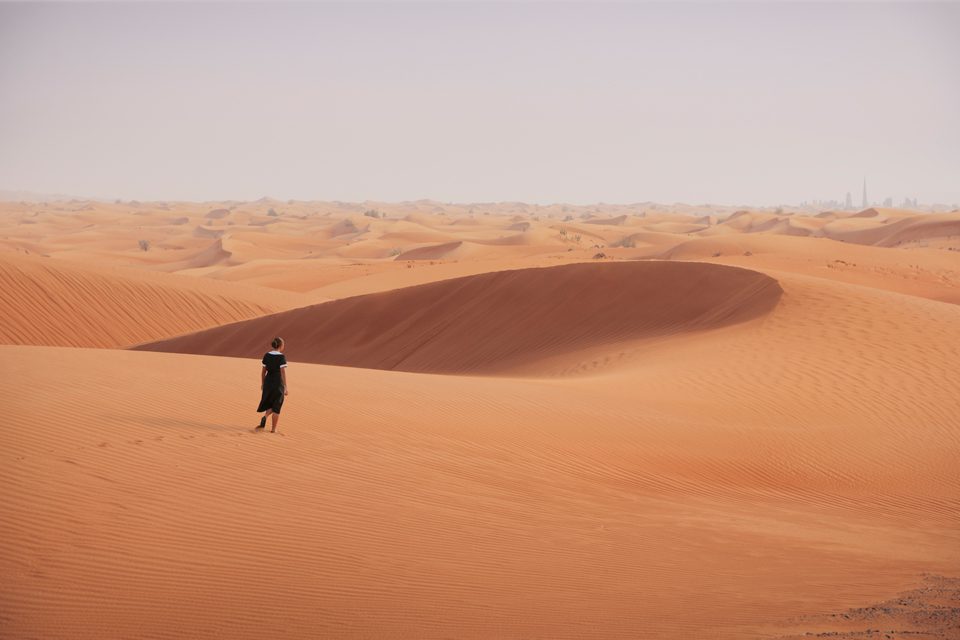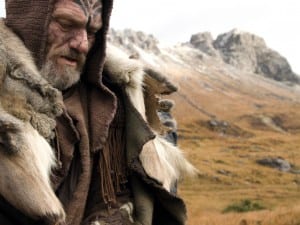Filmmaker and artist Isaac Julien’s PLAYTIME at Victoria Miro is an ambitious new body of work exploring the dramatic and nuanced subject of capital.
Since Isaac Julien (b. 1960) began making films in 1983, he has emerged as one of the most compelling and experimental artist filmmakers working today. In a wide range of feature films, meditative documentaries and art installations, he has consistently traversed challenging subject matter such as migration, economics, visual representation, homophobia and racism. With a new exhibition, PLAYTIME, opening at Victoria Miro in London and the UK release of a new book about his work, RIOT, by The Museum of Modern Art, New York, Julien’s diverse and restless work is receiving renewed and focused attention across multiple platforms throughout the world.
A prize winner at Cannes in 1991 and a Turner Prize nominee in 2001, it is perhaps testament to an ingrained unconscious codify of genres that Julien’s work seems so singular in its crossing of traditional boundaries between artists’ and cinematic film. However, this is a distinction that the artist feels is in part fictional, and certainly malleable: “I would agree with Steve McQueen when he says that whether you work in installation art or you are working from a cinematic perspective, you are involved in telling a kind of story. It’s a different language, of course, perhaps made for different settings.” Adapting his work across different settings allows Julien to make work that reaches not only different audiences but, more importantly, touches people in a different way: “In my case, in an installation setting, it’s to do with the kind of poetry you can achieve with images. That’s one of the things that has been very exciting: the way in which technology has become quite sophisticated, with us all opening multiple screens all the time. This seeps into the way you work.”
At the heart of Julien’s new exhibition at Victoria Miro is the world premiere of PLAYTIME (2013), a seven-screen installation that features the actors Maggie Cheung, Mercedes Cabral, James Franco, Colin Salmon and Ingvar Eggert Sigurgsson. The renowned art auctioneer Simon de Pury also appears in the film, playing himself. Creating an immersive and rapturous experience, the work examines the ways in which notions of “capital” translate across three global cities: London, Reykjavik and Dubai. While the places themselves are imbued with a sense of character through their relation to capital, Julien’s protagonists are equally characterised and in some senses compromised by the global flow of capital: his roll-call of characters includes the Artist, the Hedge Fund Manager, the Auctioneer, the House Worker, the Collector and the Reporter, thus investigating the key rolls within the contemporary art market. As Julien himself notes, the film begins an investigation of global capital that is motivated by a sense of self-reflection or “pointing the mirror at ourselves”; the image that is seen there, is at times almost nauseating, and at others merely hopelessly flawed. Nonetheless, rather than smugly pointing the finger at a group of people or a profession, Julien’s first recourse is what he knows best: “There is a broad spectrum of people who are involved in capital, and that includes people who work in the art world.”
Perhaps the most compelling aspect of PLAYTIME, however, is the way that Julien is able to combine a meticulous study of art world capital and a strongly felt emotional resonance that demonstrates the impact of the global flow of capital on individuals. The characters in Julien’s film are all based on real figures, known personally and researched extensively by the artist. There is, therefore, a tenderness and empathy in many of the characters depicted.
The title of the piece is both a reference to the giddy gamesmanship of art world capital and the manipulations of “time” that “play” out in all filmmaking and which is perhaps becoming less hard and fast in contemporary technological environments. Using multiple-screen technology in this and other installation works allows Julien to not only create a multi-focused and non-linear narrative across different planes, but also to reference the ways in which we constantly live our cultural lives across numerous screens: “We are obsessed with our computers, laptops, Facebook and emails; we are endlessly opening multiple screens. In a way, we are all migrating from one space to another virtually.” This is built into viewing the work itself; the audience is able to move around the space and encounter it from many angles and perspectives in what the artist calls a “migratory experience.” There is a feeling of diaspora written into the way these works are designed to be seen, the attention shifting, dissipating and reigniting as the manifold screens are viewed. There is, too, a sense of being a rabbit caught in the headlights, transfixed by the enormity of the visual stimulation.
As with many of Julien’s film works, PLAYTIME occupies a fluid space that combines both elements of fiction and documentary, allowing the spectator the distance of fictional cinema and art to investigate stories that are indeed very real. The same effect was achieved in his 2010 installation Ten Thousand Waves, which is currently on show at MoMA in New York. This work takes as its subject a different form of economic migration, the Morecambe Bay tragedy of 2004 in which 23 immigrant cockle pickers lost their lives. Including an original score by the composer Jah Wobble, Ten Thousand Waves is a profound film, which combines a meditation on aspects of both contemporary and ancient Chinese cultures. In particular, the film takes as its lyrical architecture the themes of movement and displacement. These topics resonate throughout and, indeed, there is a specially commissioned text, Small Boats, by the Chinese poet Wang Ping and a dramatised fable starring Maggie Cheung as the Goddess Mazu. Disparate elements such as these come together and are interlocked in an overall weave that is mesmeric, unsettling and almost unbearable in its exquisite artistry and emotional depth.
Julien’s work tends to operate rhythmically, rather as dance would be choreographed or poetry and music composed. This is an aspect of his aesthetic that was most fully realised in 2007 when Julien and the choreographer Russell Maliphant collaborated on the multi-media dance event Cast No Shadow. Incorporating the pieces True North (2004), Fantôme Afrique (2005) and Western Union: Small Boats (2007), this performance enabled Julien and Maliphant to fuse together live moving bodies with the flickering screens of films. In a sense breaking out of the normal constraints of the cinema, the performance represents a provocative inhabitation of a space that is both film and beyond, a space that could arguably be seen as emergent in his installation projects, where the audience is almost choreographed by the act of observing the pieces across multiple screens. However, even when realised purely on film, the combination of poetic, choreographic and documentary forms has been a facet of Julien’s art for many years. This is evidenced not least in his early success, the intensely meditative short Looking for Langston (1989), which focuses on the period of the 1920s known as the Harlem Renaissance, and in particular forms a portrait, of sorts, of the poet Langston Hughes. Dealing with themes of homophobia within the African American community and racism within the gay community, the reluctance of Langston Hughes’ estate to acknowledge his sexuality made Julien’s film a bold and important intervention. However, quite apart from its significance within these contexts, Looking for Langston manages to at once delight with the sheer eroticism of its imagery and to articulate a sense of profound desire and longing for identity. An interrogation of repression and of deeply disguised and unacknowledged desires permeates every aspect of the film. As such, Looking for Langston reflects an aspect of Julien’s work that has never wavered: a confrontational attitude that gravitates towards fresh perspectives on, at times, uncomfortable content.
Julien’s work is uncompromising and challenging in every sense, and nowhere more so than in his first major film Who Killed Colin Roach? (1983), a short film that takes as its subject the death of the 21-year-old black man who was killed inside the doorway of a police station in Stoke Newington. The subject is handled with sensitivity for the Roach family and a palpable sense of anger, injustice and political frustration. This film reflects the indignation and outrage at racist policies and institutional discrimination that may have influenced Julien over the years and subsequently his work.
Almost 10 years later, the most mainstream success of Julien’s career came in 1991 when his film Young Soul Rebels won the critics’ prize at the Cannes Film Festival. It takes a more cinematic and narrative approach than almost all of Julien’s other works and yet, in spite of the strong story line, Young Soul Rebels achieves the remarkable feat of being almost as immersive an experience as his later multi-screen installations. Thrust into the world of the film, it becomes impossible to escape the emotional drama that unfolds, making it impossible to escape the issues it raises. Depicting simmering racism and homophobia against the story of a hate crime in a London cruising ground and the backdrop of the Queen’s Jubilee in 1977, the film endured an onslaught of negative reactions in some quarters on its release, with the director having to be smuggled out of packed and angry cinemas. What was disturbing to some about Julien’s honest exploration of desire and phobic disgust was liberating and exciting to others, becoming a basis for the New Queer Cinema movement. Julien’s work is exhilaratingly rebellious.
Perhaps reflecting this aspect of his work in its title, RIOT (2013), a new and comprehensive book released by MoMA about Julien’s art, allows the reader to study images of artworks alongside essays both by the artist himself and many influential theorists and critics such as the philosopher Bell Hooks and the cultural theorist Stuart Hall. Illuminating his work from its earliest incursions to more recent works in progress (those that constitute PLAYTIME ), the reflections of Julien on his own output are matched by those of the theorists, who clearly feel an affinity and respect for the projects that he has undertaken. Indeed, Julien’s practice has engaged consistently and seriously with the work of contemporary academic theory, an interaction and research that has gone way beyond influence and into a fundamental part of his process. For example, in the two-screen documentary KAPITAL (2013), Julien is recorded in conversation with the economic theorist David Harvey at the Hayward Gallery. The film begins from what might seem like a simple question: how can one visualise “capital”? The conversation quickly reveals the query to have many more layers and to be both problematic and probing, interrogating the fraught relationship between art and capital and the contemporary understanding of the term. However, by generating the debate, which includes members of the audience, including other influential theorists, Julien engenders a sense of capital being fundamental to art, even if it is too pervasive to be visualised per se.
What is left, then, when something is so all encompassing as to be invisible, such as capital? One answer might be the very act of looking itself, which remains even if the thing itself is absent or imperceptible. This is a fundamental theme that Julien’s work constantly and fiercely interrogates. What are the implications of “looking”? What do we think about when we see objects? How do the processes of observation affect who we are? What happens when you look not at others but rather at yourself? From the desirous glances of Looking for Langston to the uncompromising poise of Ten Thousand Waves and the haunting omnipresence of the camera at Notting Hill Carnival in Territories (1984), Julien’s work depicts the act of looking as something to be dismantled and constantly questioned. He achieves this while simultaneously presenting such incomparably compelling works that it is almost impossible for the viewer to turn away.
PLAYTIME runs until 1 March at Victoria Miro, London. Please visit www.victoria-miro.com for further information. The book RIOT by Isaac Julien and Cynthia Rose is published by The Museum of Modern Art and is available via Thames & Hudson in Britain.
Colin Herd




